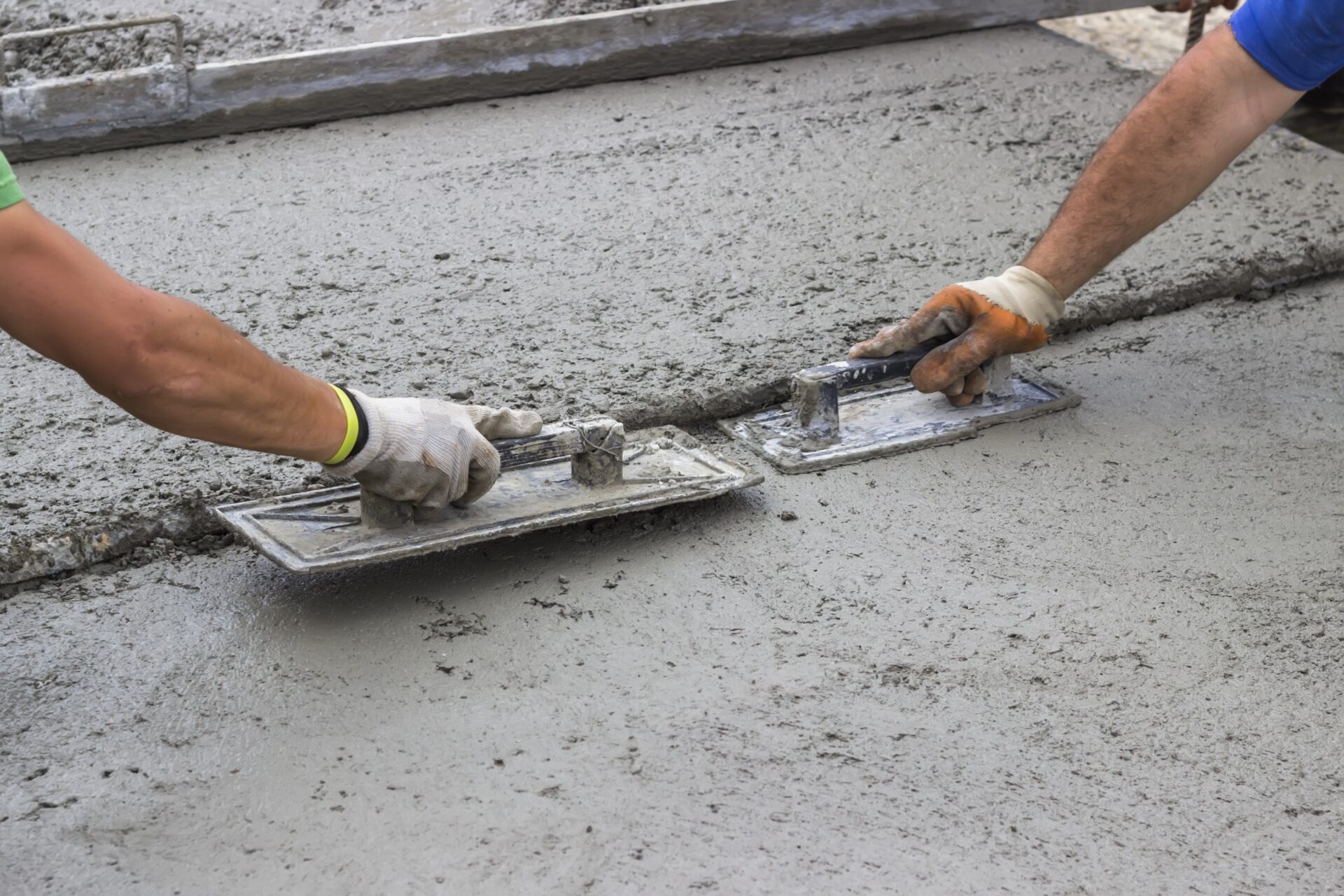
Sinking or settling concrete slabs are difficult to ignore. The issues they present can be apparent when your deck furniture looks unstable, your uneven patio poses tripping risks or you’re becoming increasingly concerned about your tires running over rocking or sinking slabs. If you’re dealing with a significantly sunken slab, you may believe getting a replacement is your only option.
The good news is that there’s a hassle-free and cost-effective alternative to concrete replacement: concrete lifting and leveling. Moreover, concrete leveling professionals use tried-and-tested methods to restore your slabs to a stable and normal position in less than a day.
What is concrete leveling exactly, and how does it work? More importantly, is it worth your investment? Below, we answer these fundamental questions and more in the following sections.
What Is Concrete Leveling?
Concrete leveling is a repair method used to fill voids under sinking concrete slabs and ultimately return them to an even position. This solution can be used to lift concrete in driveways, sidewalks, patios, porches, and pool decks, among many others.
Signs You Need Concrete Leveling
It’s often easy to identify settling slabs that need to be repaired. Any slab that has sunken at least a quarter-inch below your pavement’s surface may need to be lifted through concrete leveling. However, there are also less apparent signs worth paying attention to. If you have slabs that tend to rock when stepped on or driven over, consider getting them checked and assessed by professionals.
It’s also a good idea to call a trusted concrete repair contractor in your area if you notice these issues within your home:
- Cracks on your concrete driveway
- Misaligned porch or deck that begins to “pull away” from your house
- Warped hardwood floors
- Cracked or sinking tile floors within your home.
How Does Concrete Leveling Work?
While the specific steps will vary depending on the repair team you will hire, concrete leveling essentially involves these main steps:
- Holes are drilled through the concrete slabs to be lifted.
- The delivery port is installed into the holes. This will be used to move the lifting material to the voids underneath the slabs.
- The lifting material or leveling compound is pumped through the holes to fill the void with incremental injections. This must be done to monitor the vertical movement and ensure the slabs return to a level position.
- Once the slabs reach the desired elevation, the holes are patched.
What’s beneficial about the straightforward process involved in concrete lifting and leveling is that it’s cost-effective. As long as your concrete slab isn’t fractured and crumbling, you won’t have to invest in getting a complete replacement to fix the issue. Most concrete experts can also get the job done in less than a day, resulting in minimal disruption to your daily activities.
Finally, what is concrete leveling good for if you get an unattractive result? Fortunately, with skilled and experienced technicians, your concrete can get a smooth and seamless finish. They use high-quality products and proper techniques to seal the drill holes and ensure they match the surrounding concrete slabs.
Different Concrete Leveling Options
There are two main ways to return settled slabs of concrete to a level position.
- Mudjacking
Mudjacking is a traditional repair method using a mixture of cement, water, soil, and sand to “jack” a concrete slab up from below. This process costs less than a complete slab replacement and even its more modern alternative, polyjacking. Since it doesn’t require heavy equipment, it also helps repair sunken concrete while keeping other surfaces intact.
One factor that can be a problem with mudjacking is that the mud-like mixture used to raise the slabs is heavy. With more weight on top of the recessed area, it’s likely that the lifted concrete will eventually sink again. The method also involves drilling 2” diameter holes and patching them to achieve a seamless look.
- Polyjacking (Polyurethane Lifting)
Polyjacking is another simple and hassle-free method to lift concrete. However, instead of cement and mud, this repair method uses polyurethane foam, which creates an expandable and high-pressure foam and pushes slabs back into place.
Like mudjacking, polyjacking can be done without using heavy equipment. What makes it more convenient than the former is that it is less invasive and longer lasting. The holes needed to inject the expandable foam are smaller (only ⅝-inch in diameter), and the lifting solution used is extremely lightweight.
Is Concrete Leveling Worth It?
If your sunken concrete slabs are intact, concrete leveling is an effective solution that won’t hurt your pocket.
Demolishing and removing existing concrete can cost up to $6 per square foot, while pouring a new slab can cost an additional $10.50 per square foot. Meanwhile, mudjacking requires you to spend at least $3 per square foot. Polyjacking costs more, so you can expect to pay at least $5 per square foot.
It’s also worth noting that these concrete lifting techniques take less time compared to concrete demolition and replacement. Getting a new concrete driveway or patio involves removing and disposing of the old slabs, getting the new concrete delivered, and finally having the new concrete poured.
is concrete leveling worth it? It’s likely the more effective and budget-friendly solution if your sunken slabs are not significantly damaged. It’s best to call a reputable concrete contractor to assess your surfaces and get a quote for the necessary repair services.
How Does Concrete Leveling Work for Your Property? Let Professionals Handle Your Needs
If you regularly use your concrete driveways, patios, walkways, and other surfaces, keeping them stable and level is crucial to your smooth day-to-day activities. Fortunately, you can repair your sinking slabs without getting a replacement. If the conditions are right, you can hire concrete lifting services to return your space to its former glory.